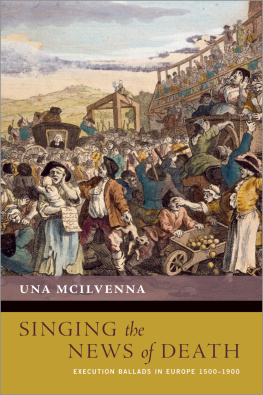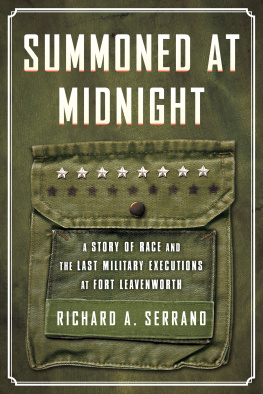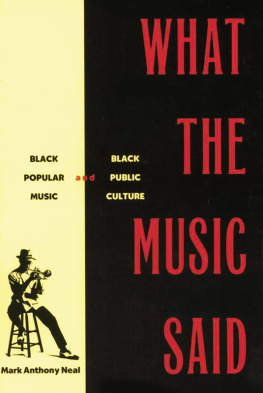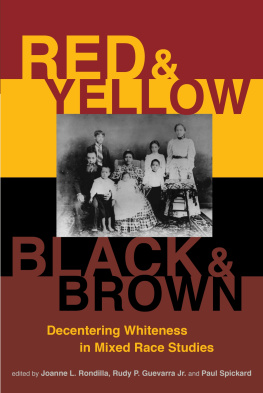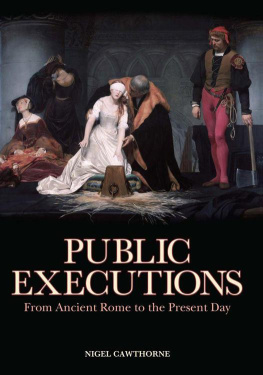Contents
List of Tables
Guide
Pagebreaks of the print version
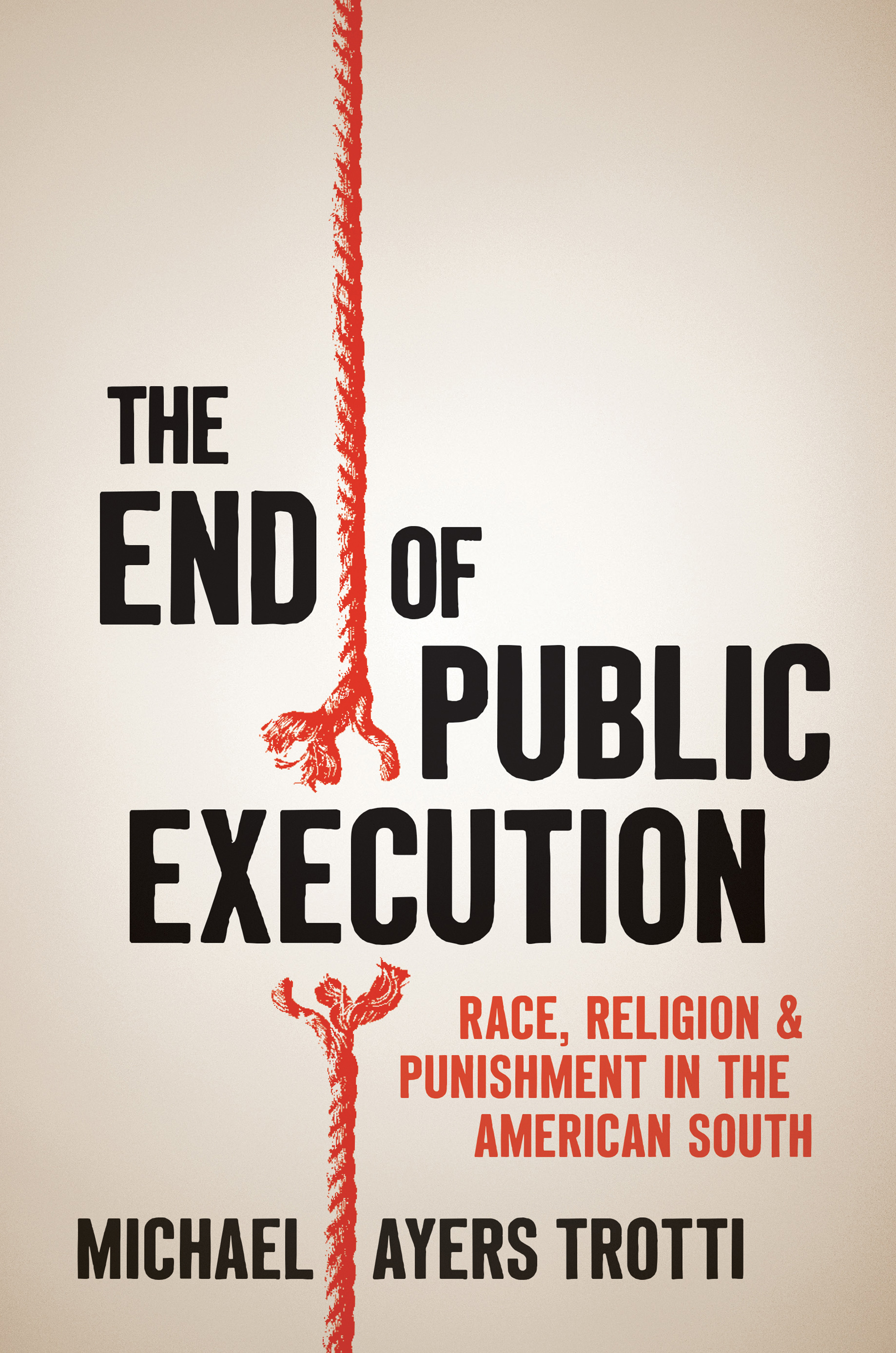
The End of Public Execution
The End of Public Execution
Race, Religion, and Punishment in the American South
Michael Ayers Trotti
The University of North Carolina PressCHAPEL HILL
2022 The University of North Carolina Press
All rights reserved
Set in Merope Basic by Westchester Publishing Services
Manufactured in the United States of America
Library of Congress Cataloging-in-Publication Data
Names: Trotti, Michael Ayers, author.
Title: The end of public execution : race, religion, and punishment in the American South / Michael Ayers Trotti.
Description: Chapel Hill : The University of North Carolina Press, [2022] | Includes bibliographical references and index.
Identifiers: LCCN 2022022447 | ISBN 9781469670409 (cloth) | ISBN 9781469670416 (paperback) | ISBN 9781469670423 (ebook)
Subjects: LCSH: Executions and executionersSouthern StatesHistory. | Public executionsSouthern StatesHistory. | Capital punishmentSouthern StatesHistory. | Discrimination in capital punishmentSouthern StatesHistory.
Classification: LCC HV8699.U6 A448 2022 | DDC 364.660975dc23/eng/20220601
LC record available at https://lccn.loc.gov/2022022447
Contents
Tables
Acknowledgments
For help in finding materials, thank you to the staffs at Cornells Olin and Law Libraries, the Ithaca College Library, the Newspapers and Periodicals reading room of the Library of Congress, the Library of Virginia, the Virginia Historical Society, the Southern Historical Collection and the North Carolina Collection of the University of North Carolina, Chapel Hill, and the Morton Library (with its gargoyle of my father) of the Union Presbyterian Seminary in Richmond.
For financial and logistical help in pursuing this project, thanks to Ithaca Colleges (ICs) School of Humanities and Sciences for the Robert Ryan professorship, as well as to ICs Provosts office, to the Virginia Historical Society, and to Christopher Swezey, friend and home-base during my trips to the Library of Congress. Students provided important help on this project, particularly Priyam Banerjee and Cosmo Houck. I required a variety of spaces to complete the writing: Cornells A. D. White Library, a park bench on Cayuga Lake, and many local coffee shops: The Shop (now gone), the Press Caf, Ithaca Coffee Company, and Gimme Coffee. The Constance Saltonstall Foundation for the Arts repeatedly provided lovely spaces for me to write with the focus that I otherwise only dream of having.
I thank the many readers who helped to strengthen this work. Much of the manuscript at some point or another over the last thirteen years has been aerated through the capacious minds of the Chapterhouse Beer&History Writing Group: Michael Smith, Robert Vanderlan, Aaron Sachs, Derek Chang, and Jefferson Cowie. Other readers of portions of this work include Amy Louise Wood, Elaine Franz, Kidada Williams, Donald Mathews, Randolph Roth, Fitzhugh Brundage, Bruce E. Baker, Robert Tinkler, Gavin Campbell, Seth Kotch, Dennis Downey, Grace Elizabeth Hale, Vivian Bruce Conger, and Jonathan Ablard. Comments and responses from two presentations at the Southern (2006 and 2014) were very helpful, as were responses to a paper presented at the 2011 St. George Tucker Society Meeting. Anonymous readers offered very important feedback as well, both for the book manuscript and for two articles related to this work that appeared in the Journal of Social History and the Journal of American History. The editorial staff of the University of North Carolina Press helped me correct many flaws and inconsistencies, as did the proofreading of my sister, Beth Schneir. Thanks to you all.
As I wrap up this project, I am conscious of how my work is dependent upon a range of less direct and tangible benefits from the wider society. My many treks to the Library of Congress were sped along by investments in Amtrak and the DC Metro system. My employment and my own education would not have been possible without significant investments by Ithaca College, the federal government, and the states of Virginia, North Carolina, and New York. We have set up a society in which schooled, middle-class people like myself can work with the assets of our society to carry projects like this to fruition, and I thank those responsible for the decisions over the course of generations that have made that possible, even while I reflect on how so many within our communities lack the means and schooling to similarly deploy societys assets to their own ends.
As with anything I do, my lifelong partnership with Christine has been the foundation of my life and therefore my work, and the love of our daughter and our son has given me joy in the midst the darkness of the topic I study here. Support from David Frahm and from friends and family of all sorts and spread out across North America have been essential to grounding me, allowing me to complete this project.
THE DEATH, RACISM, AND HORROR at the heart of this project wore on me in significant ways in the course of this project, particularly as real-life challenges faced my family. My father was ill through the first half of my work on the project, and his death in 2013 so filled me with pathos that I could not bear to look at my thousands of documents about death for more than a year thereafter. Two years later, my mother, even less expectedly, passed. I simply did not have the requisite margin to allow me to focus on this deathly project. I tinkered. For some time.
My father and my mother gave me hope, and their spirits as they struggled with each of their illnesses and with each of their passings demonstrated both how important these human moments of transition are and how to accomplish them with grace and a startlingly inspiring amount of complaisance. In their lives and in so many ways, they gave their children (and others around them) a foundation of love and support upon which to build. There is no one my father did not wish to call brother, and no one my mother did not offer a smile to.
THIS BOOK, A HUMBLE OFFERING on a disturbing topic that it is, is dedicated to them: Joan Thompson Trotti and John Boone Trotti, southerners in blood and bone, born from the mountains of Virginia and the Carolinas in the midst of the Great Depression, reminding us in the lives they lived that so much in the South stands far apart from the history, charted here, of racism and violence. There is also sweetness, a striving toward a better world, and a humble walk with God. There is also grace.
The End of Public Execution
Introduction
Re-centering
When murderers are executed as murderers, and not lionized by the people; when they are no longer allowed to pose as heroes on the awful death-trap, and to harangue the populace to their hearts content, there will be fewer of them called upon to mount the gallows.
Atlanta Constitution, 7 June 1891
DANFORTHS DROP.
__________________
AUGUSTA HANGS A MURDERER IN ARTISTIC STYLE.
__________________
The Victim Refuses the Proffered Drink of Whiskey and Went to His Death SoberThe Last Scenes.
_________________
Augusta, GA, September 4(special)Frank Danforth, the murderer of Lizzie Gray, his wife, was hanged today at 12:28 oclock. The execution was in private, and took place in the jailyard, in the presence of several hundred witnesses. There was an immense throng of negroes on the outside, and men and boys were perched on the housetops and trees. Among the crowd who got up on the high jailyard fence and viewed the execution were many white women, who unflinchingly stood the test of their courage.


